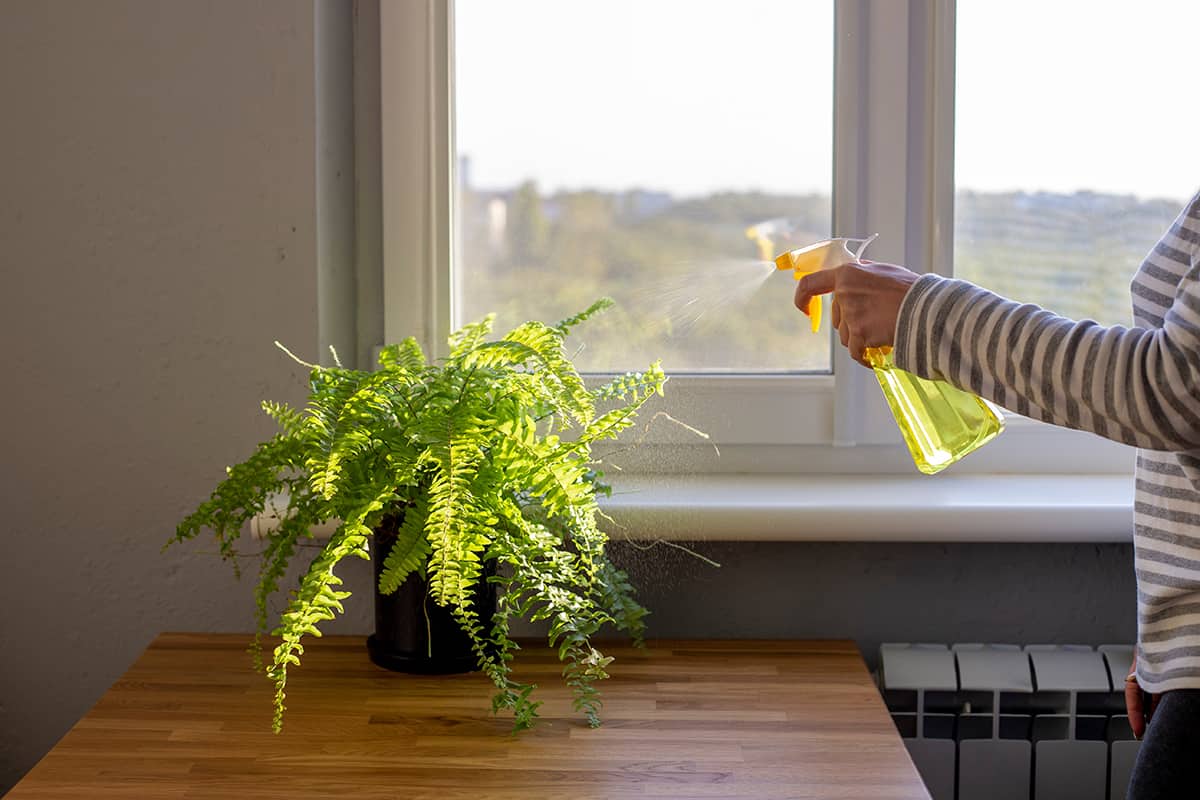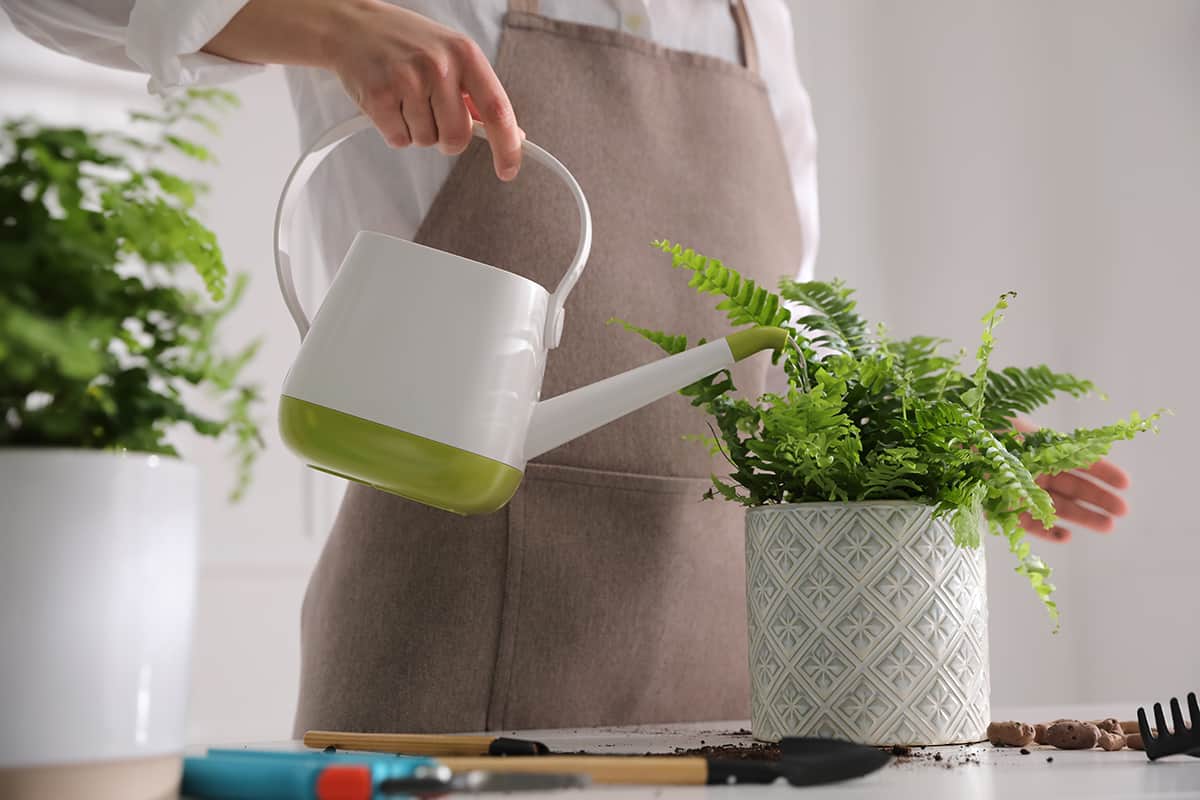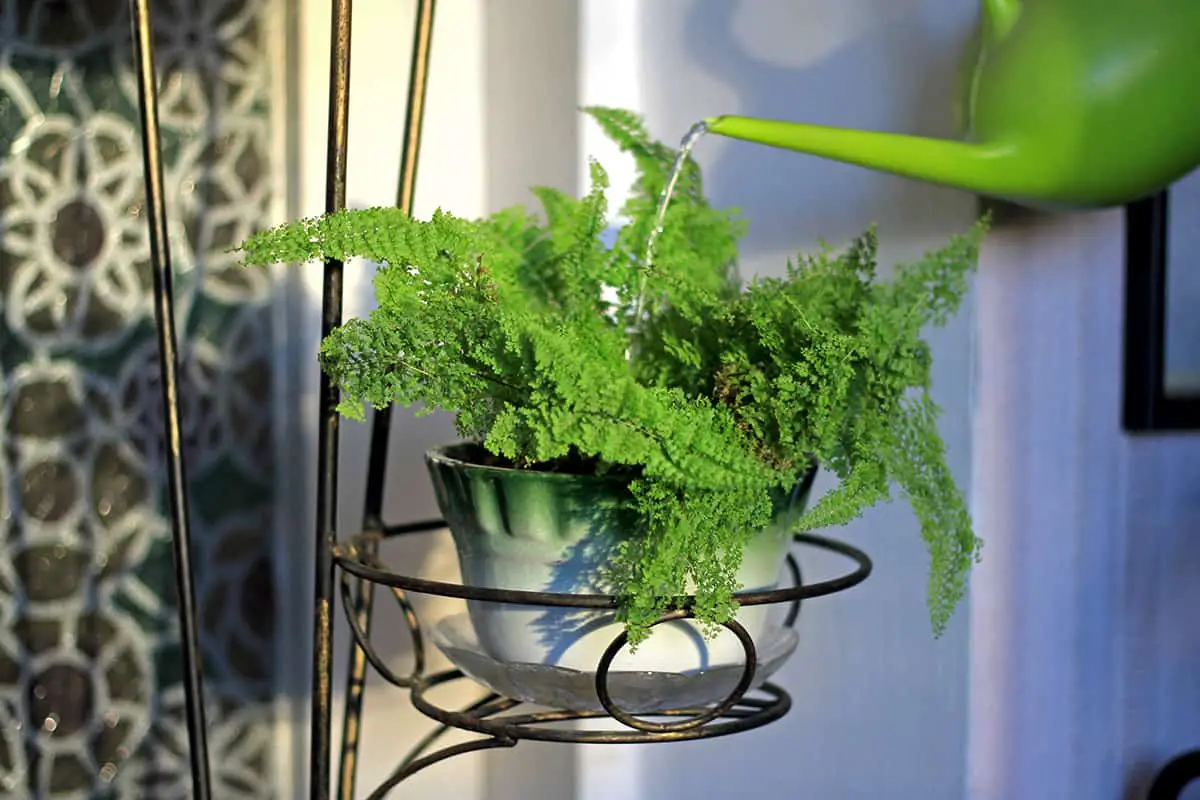The vast majority of ferns prefer to be grown in moist soils, with some even having a preference for boggy, waterlogged soils. This can make them quite high-maintenance plants to look after, especially in periods with no rainfall where you might need to water your ferns as often as every day.
As with all plants, watering your ferns should not follow a specific schedule; instead, you should follow the lead of the soil. When a moisture-loving fern has soil that is dry to the touch, this is an indication that it needs watering.
The frequency with which a fern needs to be watered will vary between species, and also be heavily impacted by the conditions the plant is growing in, and the local climate. As a general rule, ferns will need around 2 inches of rainfall each week to remain healthy, which equates to a generous watering once a week in a moderate climate.
Table of Contents
How Moist Should Fern Soil Be?
Ferns are well known for being shade-loving plants which thrive in damp woodlands with consistently moist soils, but since there are estimated to be around 12,000 different types of ferns in existence, there are bound to be some which do not fit the mold of requiring darkness and moisture. This is why it is extremely important that you know which type of fern you are dealing with, so that you don’t inadvertently provide it with the wrong care.
For example, the Wavy Scaly Cloak Fern (Astrolepis sinuata) is a type of fern which actually prefers to be grown in dry soils, and is very tolerant of drought, and by comparison, the Cinnamon Fern (Osmunda cinnamomea) has such high water needs that it is best suited to growing in waterlogged soils or standing water. Once you know and understand the specific needs of your fern, you can set about achieving the correct level of moisture in the plant’s soil.
The majority of ferns prefer to be grown in consistently moist soil, which means striking a balance where the soil is not allowed to dry out, but it also does not become so wet that the roots of the plant could rot. As a general rule, moisture-loving ferns should receive between 1 and 2 inches of water each week, but this will vary according to the type of fern, the conditions the fern is growing in, and the size of the fern.
When To Water a Fern Plant

For the vast majority of ferns, which prefer to be kept in moist but not wet soils, you should water according to the condition of the soil.
A fern will need to be watered when the top layer of the soil it is growing in has become dry to the touch. The regularity of watering will depend on a variety of factors, including your local climate, the size of the fern, and the type of fern.
Watering through the growing season
The growing season of a fern takes place through spring and summer, and this is when it will be spreading its roots and producing plenty of new foliage.
During this time, the plant needs access to water and nutrients to help it thrive. For outdoor ferns, you should aim to prevent the soil from drying out during the growing season, which could mean watering the plants every day in hot and dry climates. In cooler climates, you might get away with watering the fern once a week in the absence of rainfall. If it has rained, you won’t need to water the fern.
Watering through dormant season
Dormant season happens through fall and winter when the fern isn’t actively growing, and instead is storing energy for the growing season ahead.
Throughout this time the plant will need much less water, but the soil should still not be allowed to dry out. Outdoor ferns will happily survive on rainfall through the dormant season, while indoor ferns will need to be watered around once a month during this time.
How Often to Water a Fern Houseplant
Ferns which are kept as houseplants, or ferns which are grown outside in containers, will need slightly different care to those planted in the ground when it comes to watering. Ferns growing in ground soil can spread their roots to access more moisture if their surrounding soil becomes too dry, whereas ferns grown in pots are limited to the soil inside that pot.
This, added to the fact that soil in containers dries out more quickly than ground soil, means that you will need to water potted ferns more frequently. During the spring and summer months, you can expect to water a fern houseplant once every week, though it is best to pay attention to the condition of the soil rather than a set schedule.
Outdoor potted ferns should be watered regularly in the absence of rainfall to prevent the soil from drying out, especially in the summer.
What Affects a Ferns’s Water Needs?

Size
The size of a fern plays a part in determining how much water the plant will use and how often you need to water it. Small ferns won’t take in a huge amount of water, whereas large ferns can be quite thirsty and will need to be watered more generously and more often.
Species
Climate
Ferns growing in hot climates will usually need to be watered more heavily and more frequently than those growing in cool climates. This is because the heat will dry out the soil more quickly, and it will help to prevent foliage from shriveling in hot temperatures. In humid climates, the ferns can absorb some moisture from the air, so they may get away with being watered a little less frequently.
Light exposure
Most ferns thrive in full shade or partial shade, although there are exceptions to this. Generally speaking, the more light a fern gets, the more water it needs. A fern growing in full shade will need to be watered less frequently than a fern growing in dappled shade.






